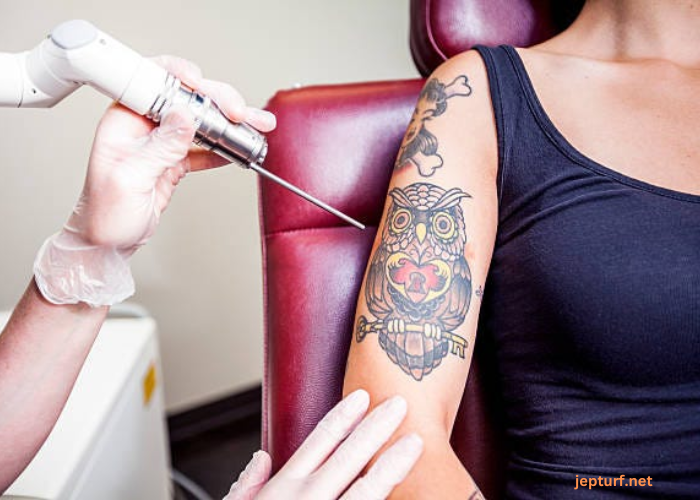Tattoos, once considered permanent marks of expression, are increasingly becoming subject to change. Whether due to evolving tastes, career considerations, or a desire for a clean slate, the demand for tattoo removal has surged. If you’re considering removing a tattoo, it’s crucial to grasp the process thoroughly to ensure safety and effectiveness.
Understanding the Removal Process
Tattoo removal procedures have improved dramatically in recent years, offering safer and more effective solutions. The primary methods include laser removal, surgical excision, and dermabrasion. Laser removal, the most popular option, includes employing high-intensity laser beams to break down the ink particles gradually. This process allows the body’s immune system to eliminate the ink naturally. This targeted approach minimises damage to surrounding skin tissue, resulting in more precise and efficient removal of the ink.
Choosing the Right Provider
Choosing a certified and experienced provider is paramount to achieving optimal results. Look for a licensed dermatologist or medical spa with a proven track record in performing removal procedures. Additionally, inquire about the type of laser technology they use, as advanced lasers can target a wide range of ink colours with minimal risk of scarring. Before making your final decision, consider scheduling consultations with multiple providers to discuss your specific needs and assess their level of expertise and professionalism firsthand.
Assessing Tattoo Characteristics
The success of this process largely depends on various factors, including the size, colour, age, and location of the tattoo. Generally, smaller ones and those with lighter ink colours respond better to treatments. Conversely, larger ones or those with vibrant colours may require more sessions to achieve satisfactory outcomes. Additionally, tattoos located on areas of the body with better circulation, such as the arms or legs, may fade more quickly compared to those in areas with less circulation, such as the feet or hands.
Managing Expectations
It’s essential to have realistic expectations when undergoing the process. While significant advancements have been made in the field, complete removal may not always be possible, especially for older or multicoloured tattoos. Additionally, multiple treatment sessions spaced several weeks apart are typically required to achieve desired results.
Preparing for Treatment
Before undergoing the process, your provider will thoroughly evaluate your skin and medical history to make sure you’re a suitable candidate for the procedure. They may recommend certain precautions, such as avoiding aspirin or other blood-thinning medications, to minimise the risk of bleeding or bruising during treatment. Furthermore, discussing any existing skin conditions or allergies with your provider beforehand can help tailor the treatment plan to suit your individual needs and minimise the risk of adverse reactions.
During the Process
During the removal process, you may experience sensations similar to those felt during the initial tattooing process, such as mild discomfort or a sensation of heat. Your provider may apply a topical anaesthetic or use a cooling device to help manage any discomfort. Depending on the size and intricacy of the tattoo, each treatment session usually lasts 15 to 30 minutes.
Post-Treatment Care
Proper post-treatment care is essential for promoting optimal healing and minimising the risk of complications. Your provider will provide you with thorough advice on how to take care of the area that has been treated, including applying antibiotic ointment, keeping the region clean and dry, and avoiding exposure to direct sunlight. Following these instructions closely is crucial to ensure the best possible outcome.
Tattoo removal is a highly personal decision that requires careful consideration and research. You can achieve safe and effective results by understanding the process, choosing a qualified provider, managing expectations, and adhering to proper pre and post-treatment care. Remember, while these techniques continue to advance, patience and commitment are key to achieving your target outcome. If you’re considering the removal, consult with a qualified provider to discuss your options and develop a personalised treatment plan.



